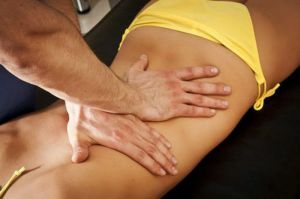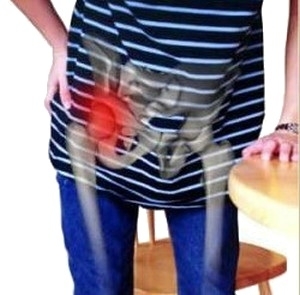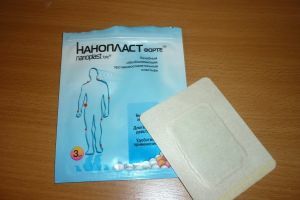 Radicular syndrome of the lumbar region is a complex of signs that arise due to compression of the spinal nerves in the places of their separation from the spinal cord.
Radicular syndrome of the lumbar region is a complex of signs that arise due to compression of the spinal nerves in the places of their separation from the spinal cord.
Syndrome is a symptom of a variety of diseases, which is why it is important to identify it and prescribe competent treatment in time.
It is observed quite often. Nerve compression provokes pain, which can occur in a variety of places: in the limbs, in the neck, in the lower back. Pain can also be seen in the internal organs.
Contents of the article
- The causes of the
- syndrome The causes of the
- syndrome How the
- syndrome manifests Diagnostic techniques
- Treatment of the
- disease
- surgery Complications
- Prophylaxis
Causes of the
syndrome The lesion can be caused by a number of conditions:
- of the vertebral hernia;
- osteochondrosis;
- congenital defects of the spine;
- regular spinal column overload;
- low-activity lifestyle;
- spondylarthrosis;
- lesions, scars and tumors;
- vertebral fractures due to osteoporosis;
- changes in the hormonal background;
- subcooling.
Basically, the radicular syndrome of the lumbar region does not appear immediately after exposure to any cause.
It is preceded by changes in the area of the vertebral discs, which provoke the appearance of hernias.
Hernia, when displaced, squeezes the spine, which causes problems with the outflow of venous blood, manifested by inflammation. Thus, the nerve and tissues near it begin to surround the adhesions.
Risk Factors:
- unbalanced nutrition;
- working hazards;
- harmful effect;
- heredity;
- increase in axial load on individual parts of the spine.
How the
syndrome manifests The first symptom is pain over the course of the affected nerve .
Thus, the observed process causes pain in the lower back, buttocks, legs, etc. Pain increases when lifting heavy or when moving. 
There is a pain in the form of lumbago, which radiates to different parts of the body. Backache in the lower back is called lumbago.
The pain of a permanent property, but it increases with every careless movement.
Such attacks can cause physical or mental stress, hypothermia. Sometimes discomfort appears at night in a dream, combined with swelling and redness of the skin.
Also, the lumbar lumbar syndrome has such characteristic symptoms:
- Impaired sensitivity at the site of innervation of this nerve : a tingling with the needle makes it possible to see a significant decrease in sensitivity compared to the same part on the other hand.
- Movement disorders due to changes in muscles and nerves .Muscles dry up, weaken. In some cases, this is visually noticeable, especially if we compare both limbs.
Diagnostic procedures
 Due to the variety of reasons for the appearance of the lesion, the patient needs to be examined and only then treatment can be prescribed. To determine the cause of the infringement, an X-ray or magnetic tomography is performed.
Due to the variety of reasons for the appearance of the lesion, the patient needs to be examined and only then treatment can be prescribed. To determine the cause of the infringement, an X-ray or magnetic tomography is performed.
Through studies of motor activity, violations in the work of muscles innervated by this nerve are determined.
In addition, the following can be performed:
- ultrasound;
- myelography;
- blood test, urine;
- blood biochemistry;
- other methods for indications.
Treatment of
disease When diagnosed with radicular lumbar syndrome, treatment should begin with strict bed rest.
Medication:
- Analgesics ( ketorol, baralgin - in the form of injections) - to neutralize pain;with severe pain, novocain blockades can be prescribed.
- Non-steroidal anti-inflammatory drugs - for neutralizing inflammation. These drugs can be prescribed in tablets or injections( movalis, nimesulide), as an ointment( ketonal cream).
- Also prescribed ointments with analgesic action ( ointment capsicum), you can use instead of them papillary patch.
- Muscle relaxants - are necessary for neutralization of muscle spasms( midocals, sirdalud).
- Group B vitamins ( neuromultivitis, milgamma) - to improve metabolic processes in neural tissues.
- Chondroprotectors ( teraflex, alflutop) - stop the destruction of cartilage in vertebral joints and stimulate their recovery.
Of the additional techniques should be noted:
- Diet - the lack of fatty, salty, smoked and sharp products at the time of treatment.
- Physiotherapy - used only after the completion of the acute phase of the disorder( magnetotherapy, ultrasound).
- Therapeutic physical training - helps to strengthen muscles and normalize the motor activity of the patient.

- Massage - restores blood flow and strengthens the back muscles.
- Acupuncture relieves pain, is a safe procedure, with almost no side effects.
- Manual therapy n allows you to neutralize pain and muscle spasm;to increase the flexibility of the spinal column and mobility in the joints of the limbs;reduce hernial protrusion;"Put in place" the displaced vertebra. It should be trusted only by doctors of the relevant specialization.
Surgery
Surgical treatment for the syndrome is necessary in complex cases with severe combination disorders( paralysis, disruption of the pelvic organs).
The operation consists in excising a tumor or hernia of the disc, pressing on the nerve. Preference is given to low-traumatic methods.
Today the nucleoplasty is common - a minimally invasive operation. The doctor, using the energy of the plasma field, can accurately and step by step dissect the tissue of the disc. The procedure is safe, becausethere is a small risk of damage to surrounding tissues.
Complications of
Complications are associated with a herniated vertebral disc.
These include compression of the spinal cord, which manifests itself by numbness, weakness of certain limb muscles, causing paresis, muscle atrophy, disturbed urination and defecation.
Hernia can provoke the compression of the artery supplying the spinal cord, with the appearance of sites with the death of nerve cells. This provokes the appearance of a neurological deficit.
 Does your child have joint crunches and you do not know why? Find out why the breasts are crackling joints you can in our material.
Does your child have joint crunches and you do not know why? Find out why the breasts are crackling joints you can in our material. The reasons why the knee aches when bending a great deal from arthritis to a commonplace bruise. You can find out the specific reason here.
Preventative measures
The main methods include:
- reducing the load on the spine;
- strengthening of the back muscles through massage and special physical training;
- weight normalization;
- proper nutrition;
- wearing comfortable shoes.



